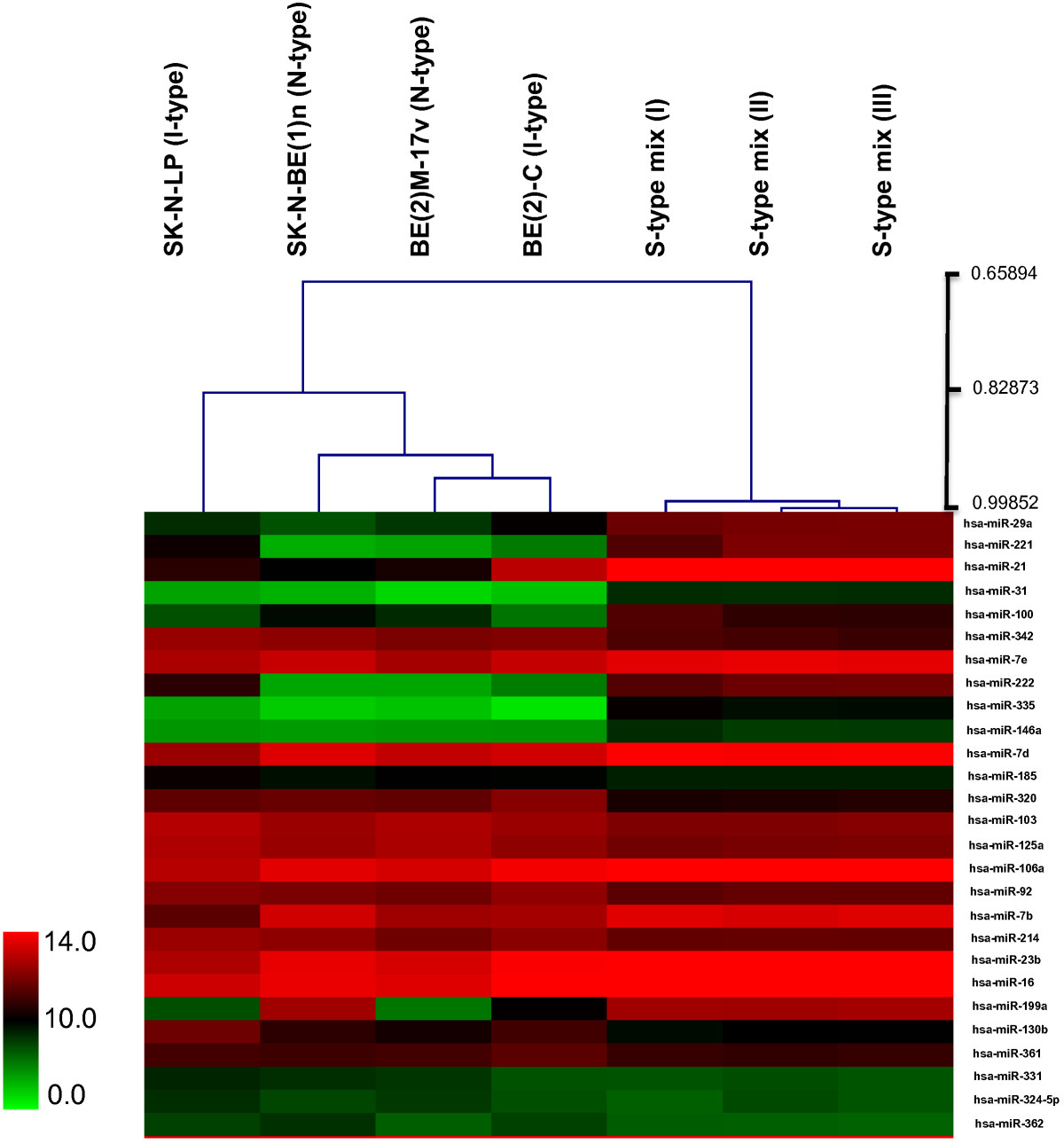Neuroblastoma (NB) is the most common extracranial solid tumor in children. NB tumors and derived cell lines are phenotypically heterogeneous. Cell lines are classified by phenotype, each having distinct differentiation and tumorigenic properties. The neuroblastic phenotype is tumorigenic, has neuronal features and includes stem cells (I-cells) and neuronal cells (N-cells). The non-neuronal phenotype (S-cell) comprises cells that are non-tumorigenic with features of glial/smooth muscle precursor cells. A recent study conducted by researchers from Albert Einstein College of Medicine identified miRNAs associated with each distinct cell phenotypes and investigated their role in regulating associated differentiation and tumorigenic properties. miRNA microarray services were performed on the three cell phenotypes by LC Sciences and expression verified by qRT-PCR. miRNAs specific for certain cell phenotypes were modulated using miRNA inhibitors or stable transfection. Neuronal differentiation was induced by RA; non-neuronal differentiation by BrdU. Changes in tumorigenicity were assayed by soft agar colony forming ability. N-myc binding to miR-375 promoter was assayed by chromatin-immunoprecipitation. The researchers observed that unsupervised hierarchical clustering of miRNA microarray data segregated neuroblastic and non-neuronal cell lines and showed that specific miRNAs defined each phenotype. qRT-PCR validation confirmed that increased levels of miR-21, miR-221 and miR-335 were associated with the non-neuronal phenotype, whereas increased levels of miR-124 and miR-375 were exclusive to neuroblastic cells. Downregulation of miR-335 in non-neuronal cells modulated expression levels of HAND1 and JAG1, known modulators of neuronal differentiation, while Overexpression of miR-124 in stem cells induced terminal neuronal differentiation with reduced malignancy. Expression of miR-375 is exclusive for N-myc-expressing neuroblastic cells and regulated by N-myc. Moreover, miR-375 downregulated expression of the neuronal-specific RNA binding protein HuD. Thus, miRNAs define distinct NB cell phenotypes. Increased levels of miR-21, miR-221 and miR-335 characterized the non-neuronal, non-malignant phenotype and miR-335 maintained the non-neuronal features by possibly blocking neuronal differentiation. miR-124 induces terminal neuronal differentiation with reduction in malignancy. Data suggest N-myc inhibited neuronal differentiation of neuroblastic cells possibly by upregulating miR-375 which, in turn, suppressed HuD. As tumor differentiation state is highly predictive of patient survival, the involvement of these miRNAs with NB differentiation and tumorigenic state could be exploited in the development of novel therapeutic strategies for this enigmatic childhood cancer.
Unsupervised clustering based on miRNA expression profiles was generated using MultiExperiment Viewer ( MeV ) version 4 ( http://mev.tm4.org/#/welcome ) and shows that N – and I – type cells are distinctly different from miRNA mix containing S – type cells.
Related Service
miRNA Microarray Service – LC Sciences provides a microRNA (miRNA) expression profiling service using microarrays based on our in-house developed µParaflo® technology platform. We have standard arrays for all mature miRNAs of all species available in the latest version of the miRBase database (Release 21, July 2014). Our service is comprehensive and includes sample labeling, array hybridization, image data processing and in-depth data analysis. Two-three weeks after receiving your total RNA samples, we’ll send you both the raw and fully analyzed data. [Learn more…]
Reference
Leleesha Samaraweera, Kathryn B Grandinetti, Ruojun Huang, Barbara A Spengler, Robert A Ross MicroRNAs define distinct human neuroblastoma cell phenotypes and regulate their differentiation and tumorigenicity (2014) BMC Cancer 14:309 [abstract]

